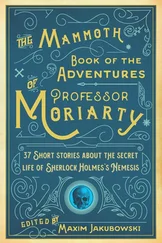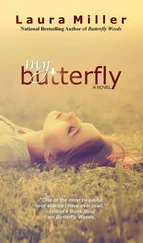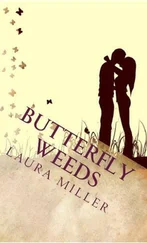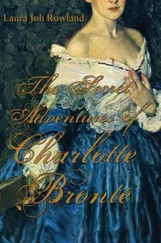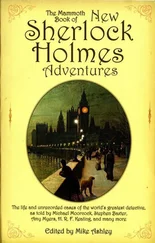The made-up-ness of Narnia has always seemed particularly glaring to certain well-read adults who never encountered the books as children. Lewis’s mythic syncretism — fauns and dragons and dwarves and Arabian Nights exoticism all jumbled together — undermines the Chronicle’s religious integrity for readers like John Goldthwaite, and the Christian subtext spoils the imaginative freedom for readers like my own teenage self. For Tolkien, these undigested borrowings and the lack of coherent, unified world-building make Narnia a flimsy, derivative concoction that spits in the eye of true sub-creation. The idea that the Chronicles are allegories — a supposedly crude, reductive, pedantic form of literature — as well as a collection of insufficiently original tidbits, offends against the premium that contemporary critics place on naturalism and novelty. “Narnia is all pieces of other fullnesses,” complains Goldthwaite, “hastily thrown together like stage props retrieved from a warehouse. The only law of consistency Lewis observed was the law of his own fancy.”
Perhaps children are just too ignorant to recognize this as a flaw, but I think not. Here at least is one case where the naive reader knows better. When Goldthwaite describes “his own fancy” as the “only law” Lewis obeys, he underestimates the potency of that fancy. The Chronicles are unified, not by anything resembling the exhaustive cultural stuff that Tolkien invented for Middle-earth, not by a single aesthetic or style, and not even, really, by a cogent religious vision, but by readerly desire. Lewis poured into his imaginary world everything that he had adored in the books he read as a child and in the handful of children’s books he’d enjoyed as an adult. And there is more, too: treasures collected from Dante, from Spenser, from Malory, from Austen, from old romances and ballads and fairy tales and pagan epics. Everything that Lewis had ever read and loved went into Narnia, and because he was a great reader, these things were as deeply felt by him as actual experiences. In his own way, Lewis, too, believed that everything in the Chronicles was true, and this conviction is what he communicates to his young readers.
The Chronicles resemble the Wood Between the Worlds in this way: they, too, are a portal to other worlds, literary worlds. I was probably the only undergraduate in my junior-year seminar on Edmund Spenser who felt perfectly at home with The Faerie Queene, although at the time I couldn’t have told you why. The “troupe of Faunes and Saytres … dauncing in a rownd / Whiles old Sylvanus slept in shady arber sound,” who come to the lady Una’s rescue when she is menaced by the knight Sansloy, were old friends of mine, people whose company I had missed. The marvel-filled woods that Spenser’s heroes roamed, Prospero’s Island, the lands Odysseus visited, and the Underworld traversed by Aeneas — all these were like old haunts to me. I would even catch flashes of a familiar figure like Uncle Andrew (“Men like me, who possess hidden wisdom, are freed from common rules just as we are cut off from common pleasures”) in the characters of Raskolnikov and Dr. Frankenstein. For the rest of my life as a reader, I will no doubt be meeting again the characters, places, and events that I first encountered in Narnia.
Lewis not only provided my first introduction to these wonders, he also taught me how to understand them, by which I mean that he showed me how a story can work in several different registers at once. I learned to read ironically with the excerpts from Eustace’s diary in The Voyage of the Dawn Treader; that meant looking past a character’s own descriptions of events to get to a more impartial version of what had actually happened. I learned to read morally by recognizing my own flaws in the ignoble impulses of Edmund Pevensie and Jill Pole. Both are styles of reading I would need once I became old enough for Lolita and Crime and Punishment. But Lewis also showed me how to read in another way: allegorically, or as he would later come to call it, symbolically.
Lewis traced a familial connection between allegory and literary myth in The Allegory of Love. Allegory, he thought, was a stage that religious stories passed through on their way to becoming the mythic elements used by poets, romancers, and novelists. It is a big leap from faith to art. As long as people believe in a god, they will most likely want something from him, regard him with what Lewis called an “urgent practical interest” and subject him to “selfish prayer.” But, given time, an unworshipped god can “come to light in the imagination” as a symbol pure and simple. Only when the last vestiges of belief have faded can he attain the full imaginative power of what Lewis called myth. This can take centuries. While those years pass, a god or a hero is always in danger of being simply forgotten. The idea of that god or hero, like the bottled juice of grapes fermenting into wine, “must be stored up somewhere, not wholly dead, but in winter sleep, waiting its time. If it is not so stored up, if it is allowed to perish, then the imagination is impoverished. Such a sleeping-place was provided for the gods by allegory.”
Demeter, for example, was the goddess of the harvest to her ancient worshippers, a deity who walked the earth, replete with all the meanings that Barfield described as residing in a full-fledged, primordial myth — motherhood, fruitfulness, grief, deprivation, pilgrimage, recovery. She is now a “myth” in Lewis’s sense of the word, a figure who exists only in stories. She still contains most of the old meanings, and even some newer ones, but artists can now do whatever they like with her without fearing either divine retribution or irate believers. (This is a freedom that no one today enjoys with either Muhammad or Jesus.) At some point, between the days when people all over the ancient world convened in Greece to celebrate the rites of the Eleusinian Mysteries in Demeter’s honor and the moment in the nineteenth century when Alfred Lord Tennyson sat down to write the poem “Demeter and Persephone,” the goddess underwent an imaginative sea change. Lewis believed that she (and Orpheus and Aphrodite and the rest) spent the first part of those long centuries of metamorphosis in the “sleeping-place” of allegory.
In the 1940s, after he’d written The Allegory of Love but before he started the Chronicles, Lewis sometimes used the word “symbol” interchangeably with “myth” in order to distinguish it from allegory. He had not lost his interest in the allegory as a form, but it did have its limits. He still thought that a good allegory must be read skillfully — by giving equal status to the images of the sparkling fountain and the lady’s eyes in The Romance of the Rose, for example — and by recognizing that the character’s behavior and actions are often a way of representing what we now regard as entirely internal conflicts. Modern readers who lack these skills misperceive allegories as no more than a pointlessly labored narrative code. But if allegory is not really as reductive as contemporary readers usually think, it is still constrained. An allegorical figure labeled “Patientia,” for example, is permitted to stand for only one thing: the virtue of patience.
Many people today also talk about “symbols” in this way, as simple equations; the farm in Animal Farm stands for the Soviet Union, and so on. As Lewis used the word “symbol,” it could not be so easily pinned down or exhausted. For him a symbol, like a myth, was “a story out of which ever-varying meanings will grow for different readers and in different ages.” A strict allegory is harnessed, more or less subject to its creator’s conscious control. A myth or symbol is less obedient. “Into an allegory,” Lewis explained to one correspondent, “a man can put only what he already knows: in a myth he puts what he does not yet know and could not come to know in any other way.” Like the images on the alethiometer in Philip Pullman’s Dark Materials trilogy, like literature itself, its meaning can never be exhausted.
Читать дальше

